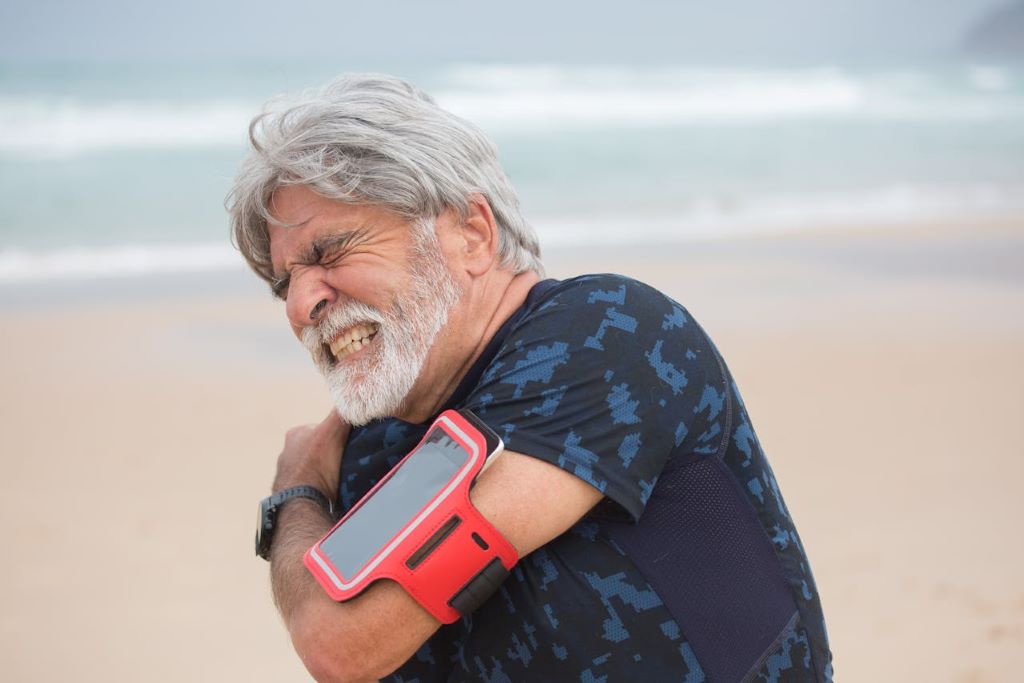What are the Best Methods to Treat Rotator-cuff Tears?

Rotator-cuff disorders are the most common cause of shoulder symptoms. Tears of the rotator cuff can result from a substantial traumatic injury or can occur slowly over time. Most degenerative tears occur in the dominant arm of adults over the age of 40, and their prevalence increases with as you age. There are a variety of treatments.
In a recent publication in the New England Journal of Medicine, University of Michigan Health professor and chair of Physical Medicine and Rehabilitation, Nitin Jain, MD, MSPH, talks through the different treatments available for rotator-cuff tears to help bring together a better understanding of how to treat the issue for patients and providers.
Nonoperative treatment, such physical therapy, is the typical approach to treating rotator-cuff tears. However, surgery is considered in certain patients whose rotator-cuff tears don’t resolve with nonoperative treatments. Topical treatments also exist, such as glyceryl trinitrate (nitro-glycerine) gel which appears to have the greatest success.
Symptoms of rotator-cuff tears
“Patients with nontraumatic or degenerative rotator-cuff tears typically experience an onset of shoulder pain that seems to have no cause,” said Jain.
“However, it is not uncommon for tears to be asymptomatic and become slowly painful over time, or even cause no pain at all.”
Jain says there are some activities that make the injury more painful as the tear worsens. This can include sleeping on your shoulder, overhead activities and/or lifting items above your shoulder level.
“Rotator-cuff tears may also grow over time, but there’s a lack of correlation between patient symptoms and the size and thickness of the tear,” explained Jain.
Your active range of motion and arm strength are usually affected by the tear, which gets assessed by using certain protocols when providers are searching for a diagnosis.
Rehabilitation and physical therapy for rotator-cuff tears
This is the most common form of treatment for rotator-cuff tears, says Jain: “It is recommended that as the first line of specialist referral, patients seek care from a physical medicine and rehabilitation doctor (physiatrist) or sports medicine doctor.
“Rehabilitation and physical therapy routines address areas such as periscapular muscle weakness, correcting scapular posture and improve rotator cuff muscle strength and endurance.”
In observational studies, more than 80% of patients who received supervised physical therapy reported reduced pain and improved function between 6 months to a year. However, the trial populations consisted of patients with various types of rotator-cuff injuries and had no requirement for advanced imaging to confirm their diagnosis.
“One of the biggest factors in a successful rehabilitation was trust from patients that their physical therapy routine would improve their rotator-cuff condition,” said Jain. “The more patients leaned into the physical therapy routine, the better their outcomes were.”
Other nonpharmacologic therapies for rotator-cuff tears
Evidence suggests that psychosocial distress and depression are associated with shoulder pain and reduced function in patients with rotator-cuff tears.
“Despite this, though, there isn’t much data supporting psychosocial interventions in the treatment of rotator-cuff disorders, even though they show benefit in the treatment of other musculoskeletal disorders such as lower back pain,” said Jain.
In addition to the lack of data for psychological interventions for rotator-cuff repairs, there’s also a lack of high quality trials supporting the use of manual therapy, massage therapy, acupuncture, therapeutic ultrasonography, transcutaneous electrical nerve stimulation, shock-wave therapy or pulsed-electromagnetic-field therapy.
Topical and oral medications and injections for rotator-cuff tears
There isn’t a lot of evidence supporting the use of topical medications in treating rotator-cuff disorders. The topical treatment with the best outcomes so far has been glyceryl trinitrate.
In a small, randomised trial it showed short term benefits in the treatment of rotator-cuff disorders, but it also found there was a considerably high bias towards this treatment from participants in the study.
Topical nonsteroidal anti-inflammatory drugs such as diclofenac and ketoprofen have also been effective in providing pain relief in chronic musculoskeletal pain and tendinitis and have a better safety profile than oral, nonsteroidal anti-inflammatory drugs.
“But high quality evidence supporting their use in rotator-cuff disorders is still lacking,” explained Jain.
For oral medications, randomised research trials have shown that oral nonsteroidal anti-inflammatory drugs (NSAIDs) reduced pain, although modestly, in patients with rotator-cuff disorders.
“Opioid drugs are generally not recommended due to risks associated with their use and lack of evidence of superiority to nonopioid therapy in a variety of musculoskeletal conditions,” said Jain.
Jain says acetaminophen hasn’t been studied specifically in rotator-cuff disorders, but what has been studied has shown little or no benefit regarding pain or function.
“Rigorous evidence is lacking to inform the use of pain-modulating drugs such as gabapentin, duloxetine, and pregabalin, specifically regarding the nonoperative treatment of rotator-cuff disorders,” said Jain.
Injection of a glucocorticoid, together with a local anaesthetic, has been reported to provide symptomatic pain relief in patients with rotator-cuff disorders.
Small trials have shown short term benefit, about four weeks long, of pain relief through using this method. The injections are performed in the subacromial space of the rotator-cuff for those with subacromial impingement syndrome. Some centres use ultrasound guidance to administer this treatment, which can reduce the risk of an inadvertent injection into the tendon.
Surgical interventions for rotator-cuff injuries
“Surgical interventions are not the initial recommendation when it comes to rotator-cuff repairs. However, they may be considered in some patients whose condition does not improve with conservative treatment,” said Jain.
Observational data supports that surgery is associated with better function and reduced pain in patients who are under 65 years of age and have smaller tears.
Surgical repairs are mostly performed arthroscopically, involving the repair of the torn tendon and resecuring it to the humerus to allow for tendon-to-bone healing as well as a low incidence of complications, explains Jain.
The hypothesis that surgical intervention can reduce the progression of muscle degradation has led some experts to recommend early surgical intervention, but data is still lacking on outcomes of early surgery compared to surgery later.



